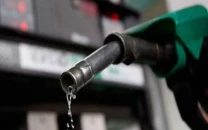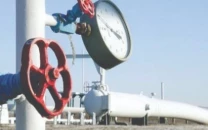Election manifesto - PML-N’s cautious optimism on economy
Aims to strike balance between high hopes of people and harsh ground realities

The Pakistan Muslim League-Nawaz has unveiled a cautiously optimistic economic manifesto in a bid to strike a balance between high hopes of the people and harsh ground realities with regard to the country’s dire financial straits, setting mostly achievable goals without unravelling the economic stability.
Some of the goals are largely in line with the five-year projections given by the International Monetary Fund in its staff report released this month. But the manifesto is silent on the questions of the new IMF bailout package and the treatment of a mounting public debt.
The budget and the current account deficit goals suggest that the PML-N, if voted to power, might be thinking of going into an IMF programme.
The party also reneged on its promise to give free electricity to those consumers who are consuming 200 units monthly – a back-paddling that suggests sanity started to prevail in the core leadership’s thinking finally.
The PML-N has not aimed at making Pakistan an Asian Tiger and seems content with adopting a conservative approach towards gradual uptick in income levels. It has announced per capita income at $2,000 by 2029, showing a gradual increase in this direction.
Last year, India’s per capita income was $2,850 while Bangladesh had also attained $2,657 per person income.
The party, which is among the frontrunners for the Feb 8 general elections, promised to bring inflation down to a single digit by fiscal year 2025 with the aim to further slowdown the pace in the affordable range of 4% to 6% by 2029. It should be noted that inflation was 29.7% in December.
The PML-N manifesto is silent on the strategy to achieve the single-digit inflation rate, Dr Miftah Ismail, the two-time former finance minister, said while speaking at ‘The Review Show’ at the Express News on Saturday.
The PML-N has promised to create a 'new ministry of economy by merging four divisions – commerce, industries, Board of Investment and Pakistan Customs.' By merging Pakistan Customs with the ministry of economy means that the customs would no longer be part of the Federal Board of Revenue.
Most importantly, the party has promised that tax policy to be announced in the PML-N government’s first budget would not be altered for the next five years – a promise if implemented can address one of the root causes of low foreign investment in the country.
Moreover, the PML-N also promised to clear Rs5.725 trillion circular debt in the power and gas sectors.
In a policy shift, the party vows that gas tariff would be fixed by taking into account the prices of local and imported gas.
The PML-N promised to reduce poverty from nearly 40% to less than 25% in five years, meaning lifting nearly 40 million people out of the poverty net.
It plans to achieve the goal through an annual GDP growth of 6% and a single-digit inflation rate.
The PML-N has promised that it would increase economic growth rate by 1% every year during its first three years in power – eying 4% GDP growth in its first year, 5% in the second, 6% in the third year and then attaining this level for the next two years.
However, the IMF forecasts 5% economic growth rate in the third year.
A gradual increase in the economic growth rate suggests that the PML-N would not risk an external sector crisis to achieve a sudden spurt in growth.
The agriculture sector growth of 5% will be achieved by the end of 2029 based on climate-resilient cropping techniques and the government’s facilitation to farmers, according to the manifesto.
The industrial sector growth of more than 7% is targeted.
Fiscal deficit
The PML-N has also not set aggressive targets to increase Pakistan’s extremely low tax-to-GDP ratio.
It has promised to increase the ratio from 10.4% to 13.5% by the end of 2029 –- a meagre 0.7% annual increase.
This may create problems for achieving another manifesto goal of lowering the budget deficit to 3.5% of GDP by the fourth year of its government.
The IMF has projected the budget deficit at 4.7% of the GDP in the fourth year of the next government.
There is a gap between the projected tax-to-GDP ratio and the goal to lower fiscal deficit to 3.5%, which the PML-N might be thinking to bridge through expenditure cuts, Ismail said.
Read: Political party manifestos: mere words on paper?
The manifesto states that frugal spending along with the privatisation of loss-making state-owned enterprises (SOEs) will help contain the fiscal deficit.
It added that a sharp decline in inflation will cut the cost of debt servicing due to consequential expected reduction in the SBP’s policy rate.
The PML-N does not seem rocking the boat when it comes to having a manageable current account deficit. The party has promised to maintain a low current account deficit of 1.5% of the GDP for the next five years driven by conducive monetary and fiscal policies, and industry and trade facilitation.
The IMF has also projected 1.5% of the GDP current account deficit for the next five years.
A buoyant economy with a higher GDP growth will help absorb new entrants into the workforce creating over 10 million jobs in next five years, according to the manifesto.
The target is to reduce unemployment to below 5% by the end of year 2029, it added.
The PML-N has also announced linking the annual increase in salaries with the inflation rate – a promise if fulfilled, would end uncertainty on this front.
The party has promised a gradual increase in the investment-to-GDP ratio from 15% to 18% in five years, suggesting that it would not opt for large and unsustainable public sector development programmes.
It has also vowed to raise private sector investment from 10% to over 12% of the GDP.
The national savings rate is projected to increase to 17% of the GDP by the end of 2029.
Power sector
The PML-N has promised to continue subsidies for farmers and the economically disadvantaged people in the power sector –- a promise that is not in line with the IMF requirements and a decision made by the Special Investment Facilitation Council.
It said that electricity bills would be reduced by 20% to 30% but did not give many details about the promise.
The PML-N has promised to deliver on a $10 billion oil refinery deal with Saudi Arabia, although lately the kingdom seems not interested in the project any more. It has also promised to build a multibillion-dollar Main Line-I project of Pakistan Railways under CPEC.
The party has promised it would rationalise Open Skies Policy in the best national interest but did not clarify whether it would give more international routes to foreign airlines or take back those that were already outsourced.
The manifesto is silent on PIA’s privatisation, though the party has promised to privatise loss-making power distribution companies.
The manifesto says that workers’ remittances will be increased to more than $40 billion annually as compared to the current level of $27.3 billion, driven by increase in manpower exports and other inflows channelised through formal channels.
It has also promised to increase the exports of goods and services to $60 billion by 2029.



















COMMENTS
Comments are moderated and generally will be posted if they are on-topic and not abusive.
For more information, please see our Comments FAQ